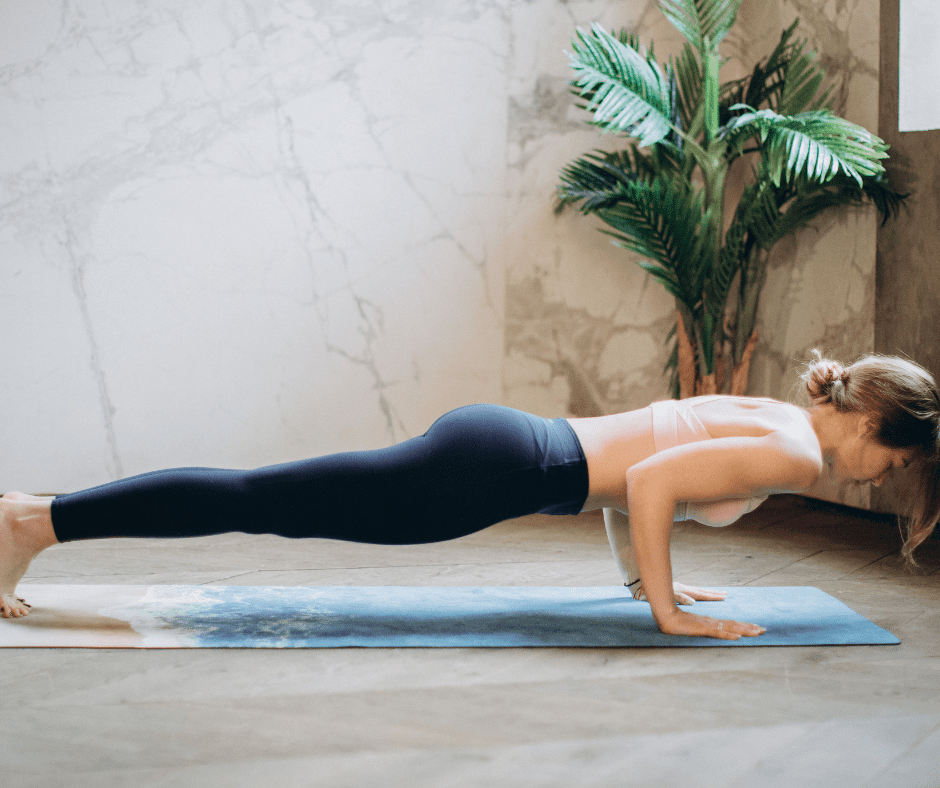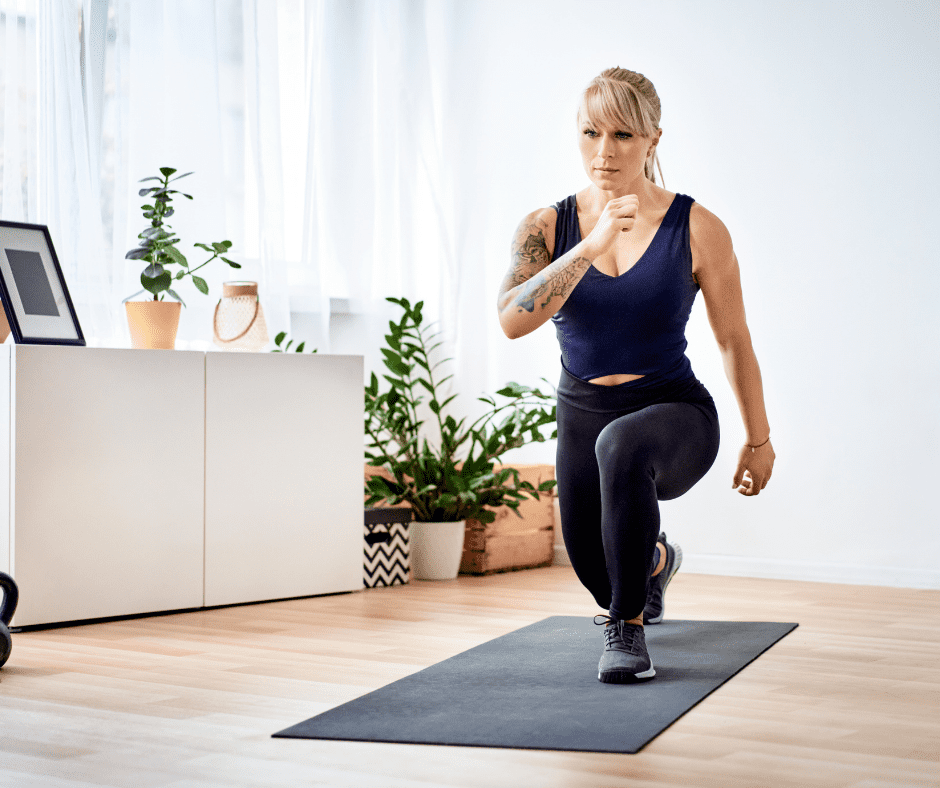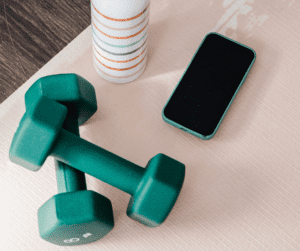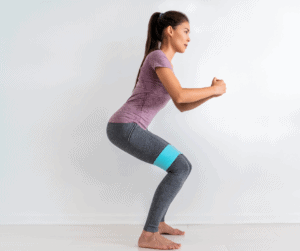How many of you actually incorporate strength training into your running routine?
If you just answered yes… fantastic! If not… don’t worry because we’re about to change that!
Strength training is extremely important for runners, for two main reasons. The first is for injury prevention, and the second is to improve your running performance and make you a faster and more efficient runner
Whether you know a thing or two about strength- training or have never thought of doing it before… many benefits come with it but there’s one that always seems to get noticed the most and it’s that strength training will improve your running.
On that note… let’s have a look at some other reasons why runners should include strength training into their routine.

Why Should Runners Strength Train?
Strength training is absolutely pivotal to include in your running plan.
We know for a fact that runners know this, yet they still don’t do it.
We believe the reason for this to be is that they know it’s important, they just don’t know why strength training is so important.

Why Strength Training For Runners So IMPORTANT
- Strength Training Helps With Injury Prevention
The reason strength training helps with injury prevention is that when your smaller muscle groups aren’t working, the bigger muscles take over… So your body always ends up compensating somewhere.
It’s your smaller muscle groups that are your stabilizers, they help your hips stay in place, and they help your foot and landing mechanics, this is why we need to ensure that those stabilizing muscles are working well and also contracting at the right time / recruited correctly.
When this doesn’t happen the foundation becomes unstable, misaligned, and abnormal movement patterns of the trunk and lower extremity occur. This can then lead to injury
Running is a repetitive sport and there is a constant repetitive action, which leads to your muscles getting tired and fatigued quite quickly, this stops your muscles from working in their normal function.
That’s the reason why from an injury prevention point of view it is extremely important to include strength training in your training plan.
- Strength Training Improves Your Running Economy
Think of your running economy like the fuel economy of your car… We want to be able to go as far as possible with the most efficient amount of fuel.
By incorporating strength training in your running program you will be able to go further and be more efficient with less fuel in your body.
Strength training can improve your running economy by 4% to 6%, depending on your level, how much strength training you are doing as well as the type of strength training you are doing.
I mean, who wouldn’t want to become a better runner just by doing strength training?
Here at Coach Parry, we’re massive advocates of strength training. We’ve put together this free strength training plan for runners that you can do once a week, at home and with no expensive equipment needed. You can access it by clicking here.

- Strength Training helps delay the onset of fatigue.
A study was conducted on two groups of 10000m runners (1 control group and 1 strength group).
There was a clear distinction between the runners who did strength training vs the control group who did no strength training.
The group who did strength training fatigued way later than the control group.
Now that you know it’s SUPER necessary… Let’s have a look at some tips you can use to incorporate strength training into your routine.
10 Strength Training Tips For Runners

- No Time To Strength Train? No Problem…
We completely understand that life gets busy and some days are absolutely chaotic…
2-3 strength training sessions per week are ideal…
2 sessions are better than 1 and 1 is better than none.
So I would rather have an athlete that does 1 strength session per week consistently than one who does 2 strength sessions inconsistent every 3 or 4 weeks.
The first thing runners tend to leave off of their to-do list to save some time is strength training and that’s a HUGE mistake to be making… That’s why we created this video for you.
In this video, sports scientist Devlin Eyden shares an insanely simple, 5 exercise routine that every busy runner should incorporate into their training.
(You can see the set and reps list in the pinned comment.)
- Periodization For Strength Training
Periodization is about your overall plan and how it pertains to every week or month.
Running is your main sport so this is about how strength training works in and around your overall running plan and specifically to your main goals for the year.
This is how you balance your weeks, months, and overall year.
- Why You Should Periodize Your Strength Training
Much like you would with your running… where you periodize your running over a period of time, where you lay the building blocks of your foundation…
The exact same thing applies to strength training.
The idea of strength training is to complement your running training.
When you are in a phase where you focus on your running and trying to build some strength and for example, you run some hills… the same applies to strength training.
When you are trying to build up your running speed the strength training that you do will complement that. Therefore it’s important that your strength training and your running speak to each other and work well together.
For example, coming into your taper before a race and in recovery weeks you should also reduce your strength training volume.

- Balance Your Strength Training As A Runner
A nice way to work on your balance is to do a combination of some stability or proprioceptive exercises (exercises that throw your body slightly out of kilter). This involves doing something simple like balancing on an Airex pad or a Bosu ball, or a hedgehog if you are in a gym environment.
You could even use two pillows if you’re at home, just to create an unstable surface.
This will help teach muscles when to switch on and off at the appropriate time so that you build joint stability.
Even just training barefoot helps!
The kinesthesis of your feet on the floor often helps with proprioception, whereas shoes mask this and make balance much easier.
Building up your joint stability will minimize your risk of injury because there’s a lot less movement in the joints themselves.
Movement In The Hip Joints – This one is important.

We need to have strong stable hips. We also need to have mobile hips.
Lack of mobility means that we lack the range of motion and often compensate with other muscles.
With good strength and good mobility, you will be able to maximize your potential in your running gait too.
If mobility is something you struggle with, then grab our free mobility flow that you can do at home by clicking here.
- How To Plan Your Strength Training
Just focusing on strength training…think about your overall year plan…
Laying The Foundations:
You should periodize or move your strength training around so that you are not doing the same thing all the time. You should also create foundational work so that you are not diving into high-intensity training without being prepared and layering those building blocks first.
From a year’s perspective, you should create your plan in accordance with specific seasons.
For example… You have your goal race, you take an off-season and when you start your new year plan, that is where you will start your strength training.
In that strength training block, what you should be focusing on is building some pure foundational strength to get stronger and prevent injuries in the future, and to build your body up to become more sustainable and able to go through the expected loads from getting into heavier running blocks.
Once You Have a Proper Strength Work Base:
Once you have a nice base of strength work from the first block, you can start moving on to a bit more of a functional type of strength training.
Closer To Race Day:
For the last part of your strength training, once you’re getting closer to your race day… You should be REDUCING the load of strength training and perhaps do some slightly more high-intensity and sharpening exercises to get ready for your race day. (But this is specific if you have good strength training experience otherwise there is a high risk of injury)
(The above is an overall yearly plan, we can take this down into smaller blocks and then into your week-on-week plans.)
NOTE: Technique is extremely IMPORTANT!
It doesn’t help if you do all this with the wrong technique – you will get injured.
It’s important to remember that without proper form and technique, the benefits of these exercises are negligible.
You run the risk of seriously injuring yourself if you make a habit of using improper technique when strength training.
When you’re strength training, you should make sure you’re able to do the exercise with the correct technique before you move from beginner classes to advanced classes.
- Strength Training During Your Taper
As you would taper leading up to a de-load week or an event, the same needs to happen with your strength training, this is done to ensure the body is feeling fresh and to ensure none of your muscles are feeling sore.
To do this you should take some strength training out during the week of a race or your recovery week.
- Strength Training In Race Week
For the shorter distance races like 5km, 10km, and 21 km we are happy for you to carry on with strength training till two weeks out, and in the final week (race week) you should just keep to the lighter sessions.
The lighter sessions should be one strength session a week (at Coach Parry we call this our Band and Core type of work) as well as a foot core session.
For marathons and ultra-marathons, it becomes important for two weeks out to REALLY reduce the load on your strength training, you can still do the foot core sessions and band and core sessions.
In race week you can leave out the band/core session and just do the foot core session.

- Different Kinds Of Strength Training Exercises For Runners
You’ll be able to find a few different strength training exercises by using our FREE Masters running strength training plan that you can do twice a week, at home and with no expensive gym equipment needed.
You should focus on prime movers for running. quadriceps, hamstrings, and glutes.
Don’t forget the stabilizers! (Pelvic stability, lower limb stability, foot core, and posture.)
- “I don’t have a gym to do strength training…”
A lot of people believe that strength training is sitting in a gym and doing bench presses, leg presses, and just pushing as much weight as you can…
A lot of people DON’T do strength training because they are worried it is exactly that… They are worried that it will bulk them up and make them heavy which will affect their running…
This is not the case as it all depends on what strength work you are doing.
Remember… You need to do A LOT of weight combined with A LOT of protein to bulk up!
The type of strength training you should be doing as a runner is generally lightweight, higher reps, bodyweight type of exercises that won’t let you bulk up but rather get so much stronger, and that is the key to strength training.
There are times (beginning of the season) when using weights is a good idea.
This idea that runners shouldn’t lift weights is old school.
At Coach Parry, we like runners to lift weights. It just needs to be at the right time in their training program and with the correct technique.
- Strength Training For Older Runners
Running fast well into your fifties is DEFINITELY possible.
Our Strength & Conditioning expert Shona Hendricks talks about what strength training you can do that will help you run faster after 50…

Join us for a free online presentation of the…
The Faster Beyond 50 Masterclass
…and discover how you can run well (and faster) as you get older, without training more or harder than you currently are, all while avoiding injury.
If it feels like you’re training harder than ever but not running the paces you’d like to be running or if you’re constantly tired, fatigued or running in some sort of pain, then this is specifically for you.




Comments are closed.